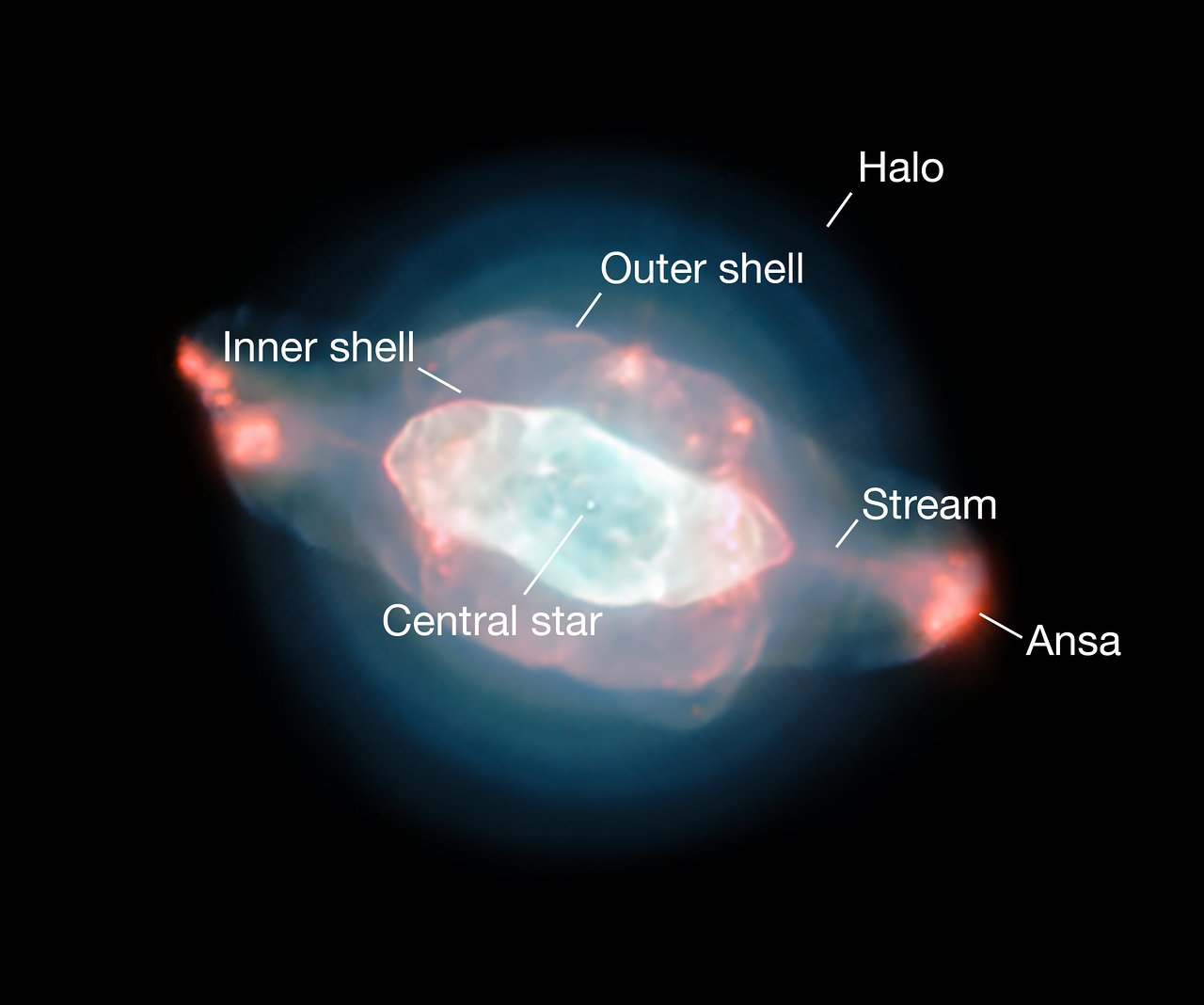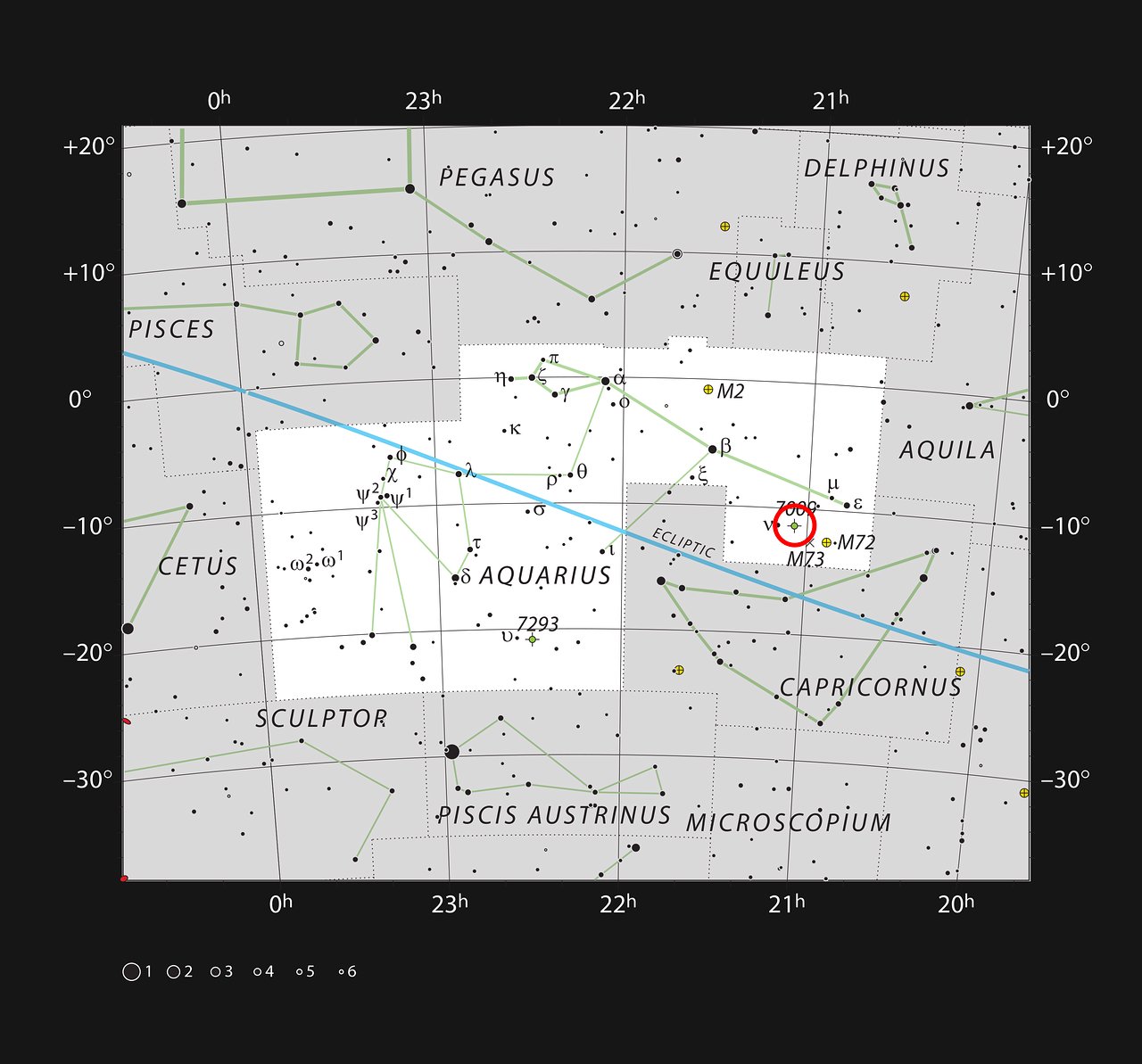Saturn Nebula's Splendid Rings Captured in New Images, Video
Skywatchers may wonder how nebulas get their marvelous colors and shapes, and a team of astronomers used the Very Large Telescope to find out.
An international team of scientists has now made the first detailed optical map of gas and dust inside a planetary nebula.
The astronomers concentrated their efforts on a beautiful celestial body known as the Saturn Nebula, or the planetary nebula NGC 7009, officials from the European Southern Observatory (ESO), which conducted the study, said in a statement yesterday. Researchers analyzed dust and gas inside the nebula, which formed after a star shed its material as it died, to understand how the star's death lead to the nebula's complex shapes. [In Full Bloom: Astrophotographer Snaps Stunning Rosette Nebula Photo]
The Saturn Nebula gets its name from the well-known ringed planet in Earth's solar system and is located about 5000 light-years away in the constellation Aquarius. It features brightly colored hot gas that encircles the former star, which is now becoming a white dwarf.
Before the nebula existed, a low-mass star was approaching the end of its life; that star morphed into a red giant star and began to shed its outer layers. These layers of gas and dust blew off into space due to strong stellar winds and ultraviolet radiation coming from the hot core of the star. The outward pulse of the material is what created the ringed shape of the Saturn Nebula.
The team used ESO's Multi Unit Spectroscopic Explorer (MUSE) on the observatory's Very Large Telescope (VLT) to see the nebula clouds up close. The telescope is located at the Paranal Observatory in Chile, and it can determine the different wavelengths of light emitted at each point in the image to work out how the nebula's dust is distributed.
With MUSE and the VLT, scientists catalogued the Saturn Nebula's features in never-before-seen detail, the statement said. In addition to the halo, inner and outer shells, and handle-like shapes, the researchers found a new wave shape whose formation they do not yet understand.
Breaking space news, the latest updates on rocket launches, skywatching events and more!
Another notable discovery was the low levels of dust in the nebula's elliptical inner shell; it seems that this material is somehow being destroyed, the researchers said. One theory, according to ESO, is that the inner shell is a shock wave, which erases the dust by heating it until it evaporates in space.
Follow Doris Elin Salazar on Twitter @salazar_elin. Follow us @Spacedotcom, Facebook and Google+. Original article on Space.com.

Doris is a science journalist and Space.com contributor. She received a B.A. in Sociology and Communications at Fordham University in New York City. Her first work was published in collaboration with London Mining Network, where her love of science writing was born. Her passion for astronomy started as a kid when she helped her sister build a model solar system in the Bronx. She got her first shot at astronomy writing as a Space.com editorial intern and continues to write about all things cosmic for the website. Doris has also written about microscopic plant life for Scientific American’s website and about whale calls for their print magazine. She has also written about ancient humans for Inverse, with stories ranging from how to recreate Pompeii’s cuisine to how to map the Polynesian expansion through genomics. She currently shares her home with two rabbits. Follow her on twitter at @salazar_elin.


